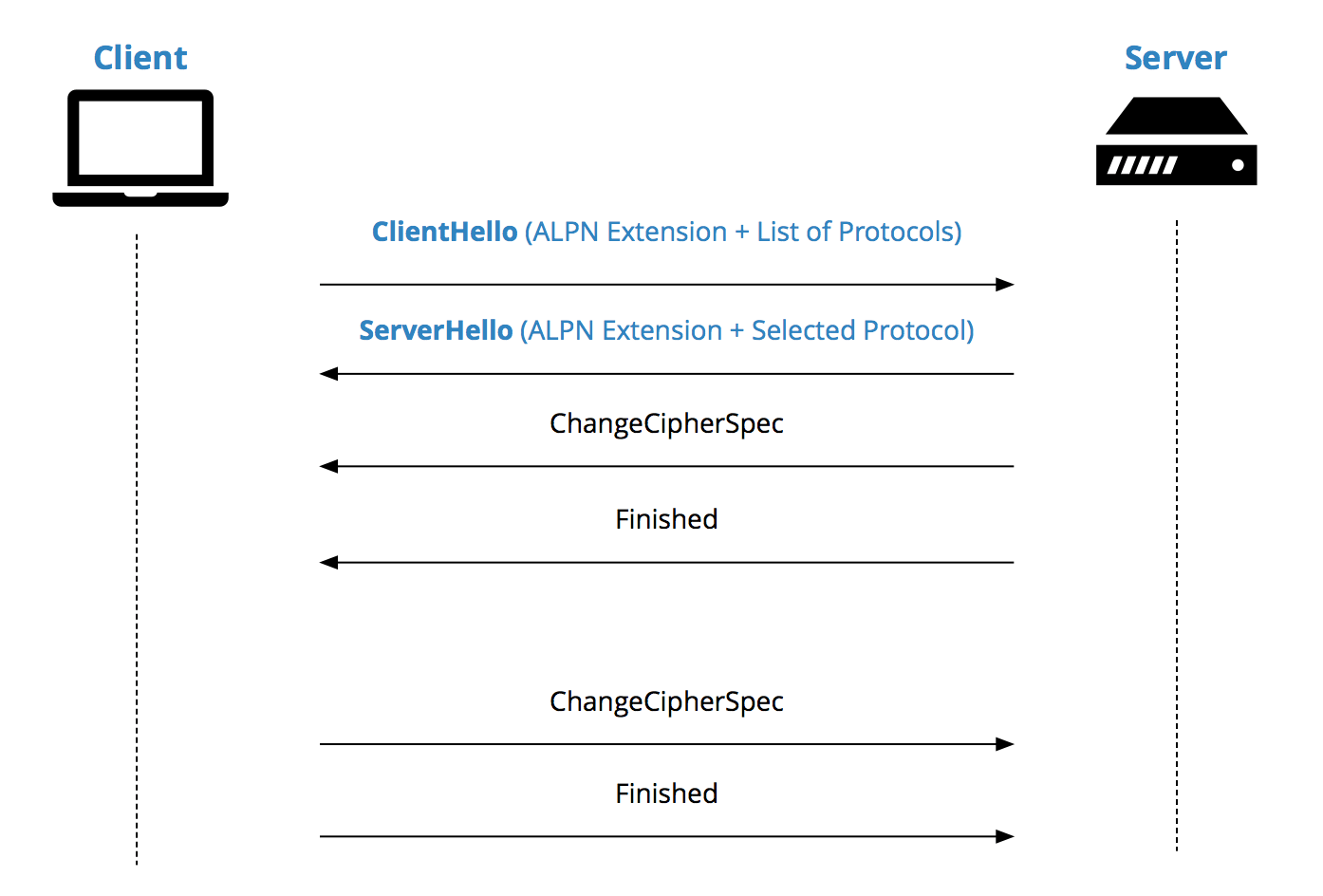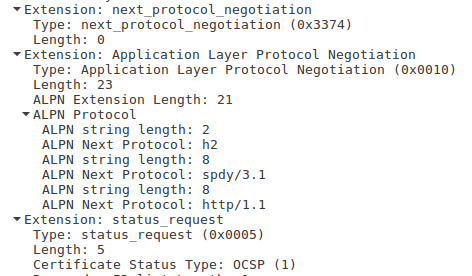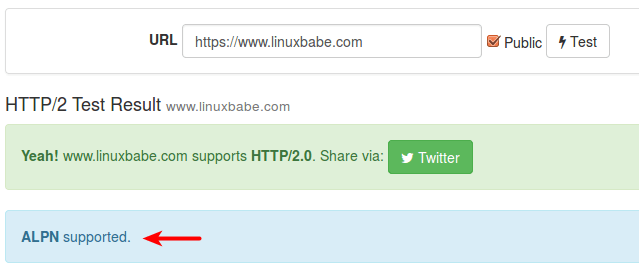Difference Between NPN and ALPN & How to Enable ALPN in Apache/Nginx
NPN (Next Protocol Negotiation) and ALPN (Application Layer Protocol Negotiation) are both TLS extensions. Since https, SPDY and HTTP/2 operate on port 443, the client and server need to negotiate what application layer protocol (plain http/1.1, SPDY or HTTP/2) to use after SSL/TLS secure connection is established between client and server.
Difference Between NPN and ALPN
SPDY uses NPN to negotiate application layer protocol whereas HTTP/2 utilize ALPN to negotiate. In order to understand the difference between NPN and ALPN, you must have a basic understanding of how SSL/TLS handshake works.
Both NPN and ALPN are used when client and server are establishing SSL/TLS connection. ALPN avoids an additional round trip because the client list the application layer protocols supported by the client in the client hello message. The server choose a protocol and includes it in the server hello message. In NPN the server list the supported protocols in the server hello message and let the client to choose. ALPN is a successor to NPN.

Src: ietf.com
The following screenshot of wireshark capture shows that the client lists three protocols h2, spdy/3.1 and http/1.1.

And this screenshot of wireshark capture shows that the server choose h2 as the application layer protocol.

How to Enable ALPN
ALPN requires OpenSSL 1.0.2. Most Linux server distributions nowadays ship with a much newer version of OpenSSL, such as OpenSSL 1.1.1 on Ubuntu 18.04. You can check your server’s OpenSSL version by issuing the following command:
$ openssl version
Sample output:
OpenSSL 1.1.1 11 Sep 2018
ALPN is used in HTTP/2, so you need to enable HTTP/2 on your server. Check out the following post to see how it’s done.
How to Check ALPN Support on Your Server
After you enables HTTP/2 on your site, go to https://tools.keycdn.com/http2-test to check if ALPN is supported by your server.

You can also test ALPN support by your sever with the following command:
echo | openssl s_client -alpn h2 -connect yourdomain.com:443 | grep ALPN
If your server does not support ALPN then you will see No ALPN negotiated.

If your server supports ALPN then you will get ALPN protocol: h2.

Wrapping UP
I hope this article helped you understand the difference between NPN and ALPN. As always, if you found this post useful, subscribe to our free newsletter to get more tips and tricks 🙂



FYI, the username and hostname wasn’t blurred in one of the screenshots.
Thanks for pointing it out. It’s now blurred.